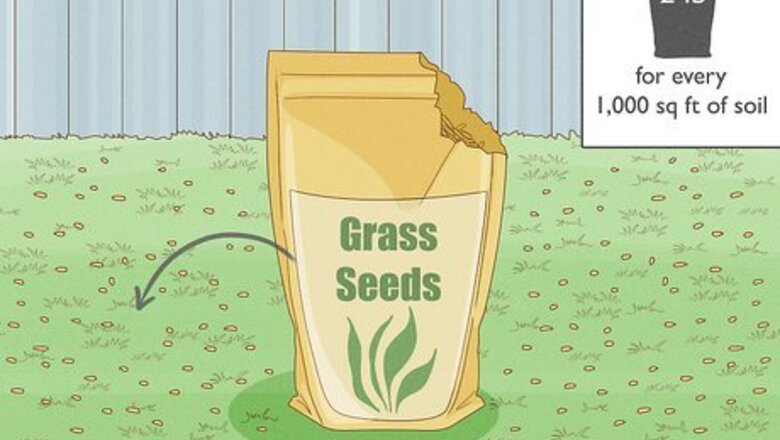
views
Crowding out Quackgrass with Healthy Plants
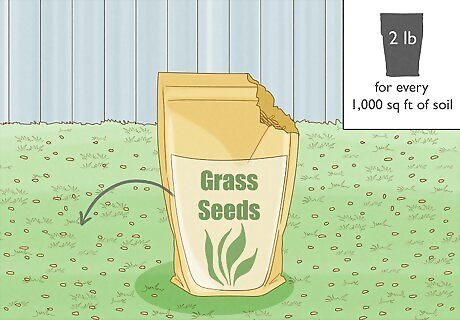
Overseed the area with desirable grass and cover plants. Suppress quackgrass by growing more vigorous plants around it. In a lawn, for instance, spread plenty of grass seeds to fill in gaps between the existing grass blades. You don’t need to till the new seed into the soil. This doesn’t get rid of the quackgrass right away, but the new growth may prevent it from spreading. To overseed a lawn, you need at least 2 lb (0.91 kg) of seed for every 1,000 sq ft (93 m) of soil. You may need more seeds for other types of grass, such as bluegrass or ryegrass. Overseeding is a way to limit quackgrass without destroying existing greenery. It’s good for lawns and fields. If you don’t wish to save the existing plants, clear the soil through solarization or by applying an herbicide.
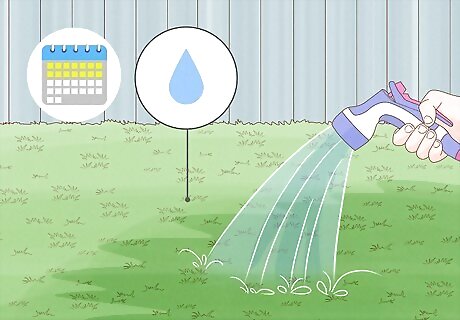
Water the grass at least 2 times a day until the new seeds grow. Never let the seeds dry out, or else the grass won’t grow lush and full. Keep the first ⁄4 in (0.64 cm) of soil moist for about 14 days. The seeds will germinate, and after this point, water the lawn deeply about 2 or 3 times a week to keep it healthy. A lawn needs about 1 in (2.5 cm) of water per week. You may need to water it more often during warm weather. To ensure the grass gets enough rain, build a rain gauge. Also, try sticking your finger in the ground to see how far down the soil dries out.
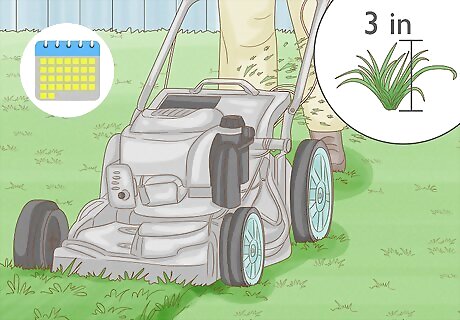
Mow the grass every week once it surpasses 3 in (7.6 cm) in height. Adjust your lawnmower to a 3 in (7.6 cm) setting. Cut back the grass, as well as the quackgrass, as often as necessary. Keep the entire lawn around this height as much as possible. The good grass will eventually outgrow the quackgrass. You may need to mow the grass twice a week in order to prevent the quackgrass from overgrowing. Cutting the grass too short may cause the quackgrass to spread. It may grow faster and taller than the regular grass. In addition, slicing its root system causes it to divide into new plants.
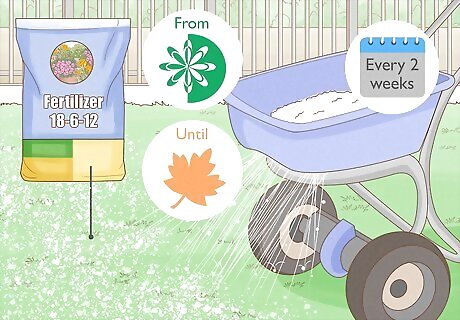
Spread a nitrogen fertilizer every 2 weeks from spring until fall. Choose a granular or fast-release fertilizer, add it to a spreader, then walk the spreader over your entire lawn. The nitrogen causes good grass to grow dark and thick, which in turn inhibits quackgrass. You need about ⁄4 lb (0.11 kg) of fertilizer for every 1,000 sq ft (93 m) of soil. Look at the numbers on the bags of fertilizer at the gardening center. The first number indicates the percentage of nitrogen in the mixture. An example of a fertilizer high in nitrogen is 18-6-12. During very dry weather, you do not need fertilizer unless you are able to provide enough water for the grass. The grass can’t absorb nitrogen without enough water.
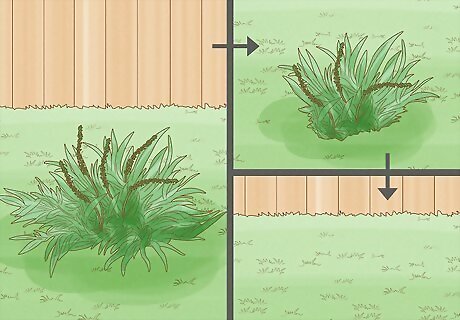
Maintain the new growth every year until the quackgrass disappears. As your lawn flourishes, watch the patches of quackgrass get smaller every year. The leaves will blend in at first, but eventually the desirable plants fill in most of the yard space. Continue fertilizing, watering, and mowing your lawn to prevent new weeds from forming. Some quackgrass may survive for a long time. It is a very difficult plant to stop, but regular maintenance is the only way to eliminate it without more drastic measures. To speed up the process, try spreading a glyphosate herbicide onto quackgrass leaves. The herbicide will kill any other plants it touches, so apply it sparingly with a paint brush to reduce the damage.
Removing Quackgrass by Hand
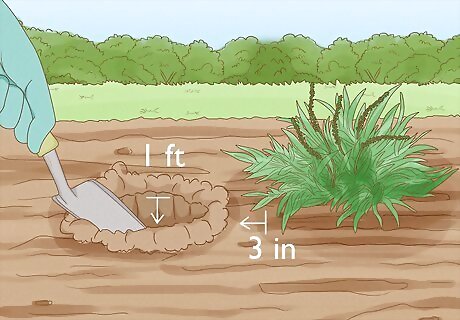
Dig a hole about 1 ft (0.30 m) deep and wide near the quackgrass. Use a garden fork to dig down towards the plant’s root system. Leave about 3 in (7.6 cm) between the quackgrass and the hole to avoid damaging the roots. Look for a horizontal, white stem called a rhizome, then clear the dirt away from it. Digging may be a little difficult if you have healthy, non-invasive plants in the area. Try to dig up grass and other plants without damaging them. Set them aside until you are able to move them elsewhere or replant them.
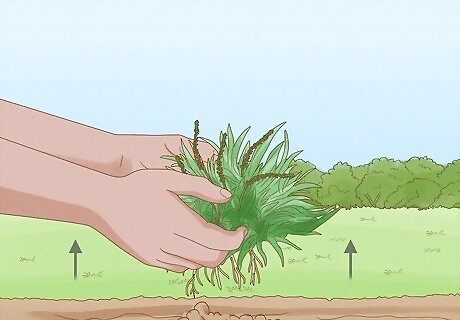
Pull the quackgrass out of the ground without damaging it. Quackgrass rhizomes are very hardy and often grow further than you expect. Lift the exposed roots out of the soil and check to see that you got the whole plant. Any broken roots likely will sprout a new patch of quackgrass, so take your time. Pulling the plants up by hand is better than tilling since a rototiller may cut up the roots. If you try tilling, set the rototiller for 12 in (30 cm) and work in the summer. Turn up the ground and wait at least 4 days for the roots to dry out.
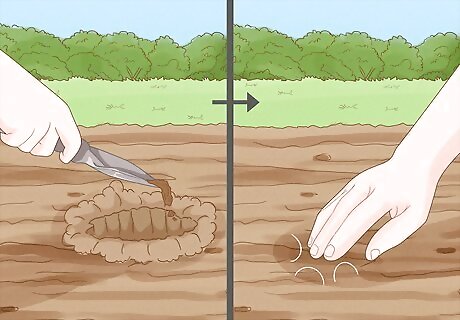
Backfill the holes and smooth out the soil. Push the soil back into the holes with a shovel or another tool. Then, drag a rake over the ground to level it. Rake away any bits of plant material you suspect may be from the quackgrass. Throw these away to ensure they don’t have a chance to grow again.
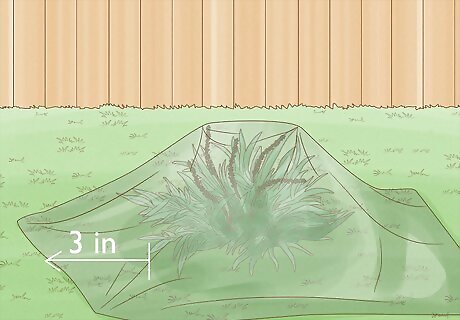
Drape a piece of clear plastic over recurrent quackgrass. Cut the plastic so it fits over the soil infested with quackgrass. Leave the sheets about 3 in (7.6 cm) larger than the areas you wish to treat so the quackgrass isn’t able to spread further. Then, anchor the plastic sheet down with rocks, bricks, or stakes. Plastic solarization sheets are available at many home improvement stores. Make sure you get a clear sheet so sunlight is able to reach the soil. Solarization will kill any other plants trapped underneath the sheet. Cutting the sheet up is a way to treat smaller patches, so leave the sheet intact only if you wish to clear out larger areas or severe infestations.
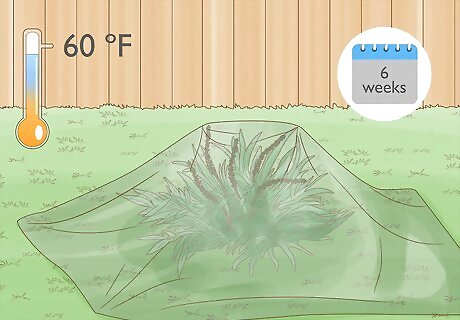
Leave the plastic sheet in place for 6 weeks in warm weather. Solarization works best in the spring and summer, when the soil reaches an adequate temperature to dry out the quackgrass. Leave the plastic undisturbed to give the soil plenty of time to heat up. The average temperature outside needs to be around 60 °F (16 °C) or higher for this to work. You do not need to clear out the dead plants in the solarized areas. Till them into the ground for use as fertilizer.
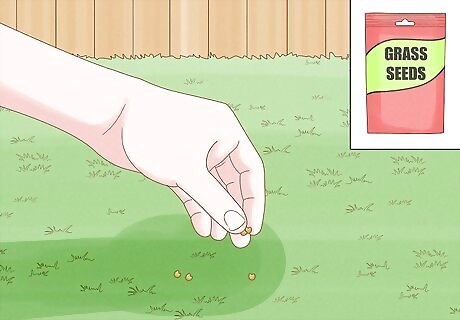
Reseed the area with any plant you wish to grow. Fill the area with new plants to prevent the quackgrass from growing back. If you treated an area of your lawn, for example, spread seeds from whatever type of grass you already have. Alternatively, turn the barren area into a garden with competitive crops like buckwheat, oats, rye, wheat, clover, or sorghum. Another option is to cover the area with a 3 in (7.6 cm) of mulch for at least 6 months. An opaque plastic mulch is the best option for preventing quackgrass, but organic mulch also works.
Treating Quackgrass with Chemicals
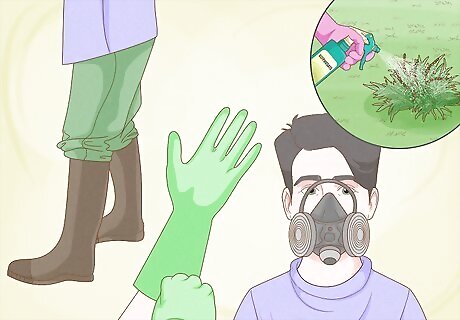
Spray the quackgrass with glyphosate to eliminate it. Unfortunately, there are no herbicides on the market that selectively kill quackgrass. An all-purpose herbicide such as glyphosate will take out any greenery it touches. Wear long-sleeved clothing, chemical-resistant gloves, rubber boots, and a respirator mask, then spray the chemical directly onto the quackgrass. Keep children and pets out of the area for about 4 hours. Glyphosate herbicides are available at most gardening centers and nurseries. To minimize the damage to other plants, use a paint brush to spread the herbicide over the leaves of the quackgrass.
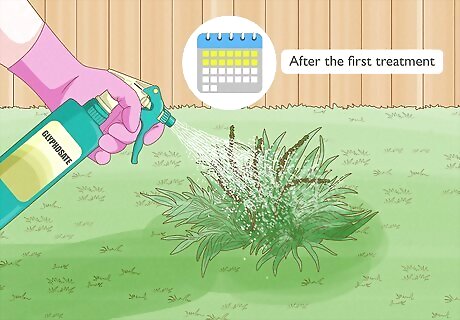
Reapply the glyphosate 14 days after the first treatment. Spray the entire growing area a second time, even in spots where you think you have eliminated the quackgrass. The fast-growing roots may have spread back into the cleared soil from elsewhere. Using the glyphosate will leave bare spots in lawns and gardens, but at least it prevents the quackgrass from taking over your entire yard.
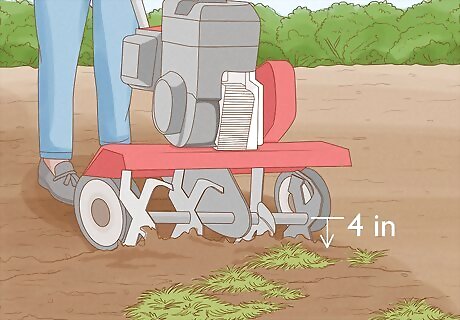
Rough up the area and look for more quackgrass after 7 days. Clear out the dead grass if you wish or till it into the soil for fertilizer. Get a rototiller and set it for a depth of at least 4 in (10 cm). Run the rototiller over the treated spots to turn up the soil, preparing it for new seeds. Rototillers are available to rent at most home improvement stores. For smaller areas, turn up the ground with a gardening fork or another tool. Keep a close watch on the treated areas for new growth. Make sure you didn’t leave behind any quackgrass in areas you didn’t spray, since they will quickly infiltrate the bare soil.
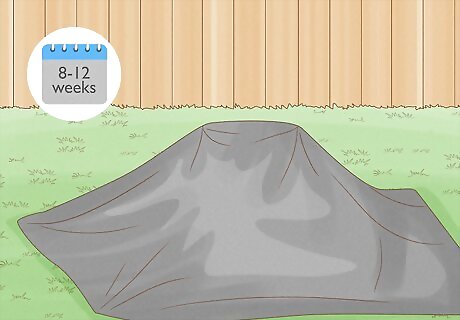
Smother the area with a plastic sheet if the quackgrass isn’t gone. Using a plastic sheet is a last resort. If chemicals aren’t enough to stop weed growth, consider covering as much of the growing area as possible with a plastic sheet from a home improvement store. Weight it down and leave it in place for at least 6 weeks. To treat smaller areas, cut the plastic up into patches. If the quackgrass is widespread, this won’t remove all of it, but otherwise, it saves the plants you want in your yard. Black plastic or tarps are also useful yard covers, but clear plastic traps heat more efficiently. If you use colored plastic, leave it in place for 8 to 12 weeks and check the progress before removing it.
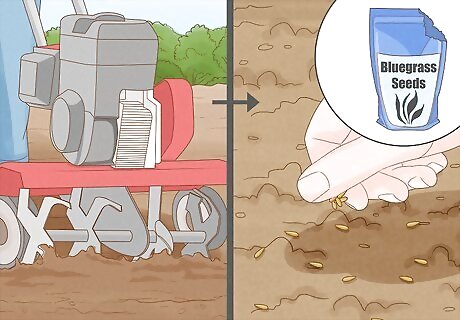
Fill the bare areas with new plants. Till the soil, then spread seed over it. Choose a type of plant that grows thick and fast, such as bluegrass, buckwheat, or tall fescue. Cover the entire area with lots of seeds and treat any nearby areas that look a little thin. Then, water and fertilize the soil as needed to ensure the new plants fill in the empty soil. Another option is to turn the area into a garden. Spread thick layers of organic mulch around your new plants. Watch the mulch for signs of unwanted growth.


















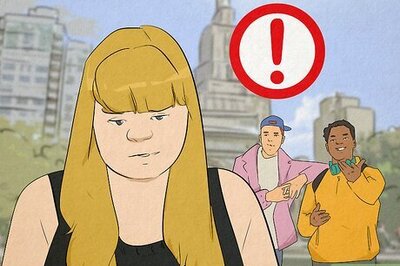
Comments
0 comment